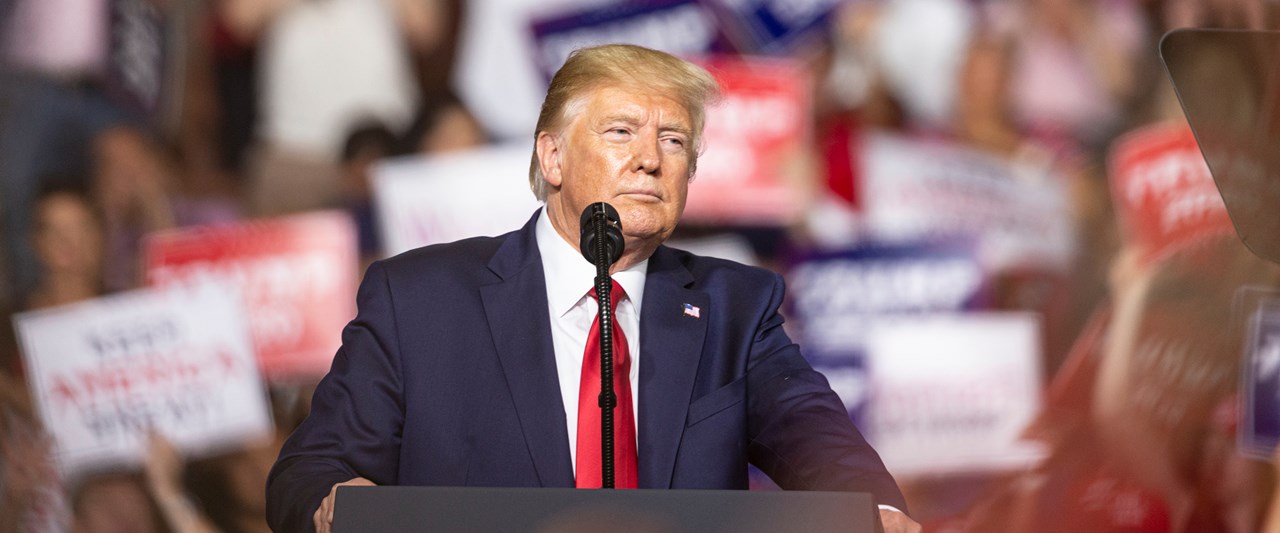
As Trump now enters the final year of either his first term or his presidency, the US continues to present geopolitical risks to global oil and gas markets, but in ways diametrically opposite to what they were at the start of Trump’s presidency.
At the negotiation table
First, while Trump’s frequent use of sanctions has taken more oil off the market than many expected, the risk is that Trump’s election-year desire to be a dealmaker will see sanctions eased and oil supply surge, perhaps without any meaningful change to the underlying sources of tension.
Trump’s withdrawal from the JCPOA Iran nuclear agreement and decision to apply “maximum pressure” have caused Iranian exports to collapse. Iran is eager to ease its economic duress and has been undertaking provocative actions aimed at imposing costs and forcing negotiations. As the economic strain on Iran intensifies, it will seek further opportunities to disrupt oil markets while restarting parts of its nuclear program.
Faced with the prospect of escalating conflict and oil prices, Trump in 2020 may try to achieve an outcome that he will claim is a “better deal” than the JCPOA. As with the US-Mexico-Canada trade agreement, which involved largely cosmetic changes from the original Nafta agreement, the contours of a “better” Iran deal may be quite similar to the original JCPOA. Yet Trump could claim success, calm regional tensions, and bring down oil prices by bringing Iranian supply back to market.
Similarly, the US has been quietly negotiating with Venezuela about possible terms under which Maduro might cede power, which could lead to the easing of sanctions and gradual return of Venezuelan oil production, which has fallen from 2.4mn bl/d in 2015 to 0.7mn bl/d in September 2019.
Second, while President Trump came into office promising to repair relations with Gulf allies like Saudi Arabia that had been strained during Obama’s tenure, recent events have exacerbated fears that the US may be abandoning the region, escalating the risk of conflict in 2020.
Following attacks by Iran and its proxies, tensions in the Mid-East Gulf are at their highest level in years. The most lasting consequence of the Iranian attack on Abqaiq and Khurais in Saudi Arabia is perhaps not its surprising sophistication or risk of recurrence, but the deafening silence of the US response. Within the Gulf Arab states today, the long-held assumption that the US would use military force to protect its interest in the region is being questioned to a new and unprecedented degree.
Both the reality and perception that the Carter Doctrine—as this US commitment to the region is known—may no longer be relied upon can have significant geopolitical consequences for energy markets going forward. The lack of response to Iran’s recent provocations emboldens Tehran to take further hostile actions, particularly if there is no viable pathway to negotiated relief from sanctions. That, in turn, increases the odds that tensions could get out of control, intentionally or unintentionally.
Moreover, oil supply disruptions in 2020 may have an outsized impact on price—as market participants increasingly share the view of those in the Gulf that the US may no longer protect the region’s energy supplies.
The perception that the US is withdrawing from the Middle East also creates a vacuum that other nations will fill. Saudi Arabia, for example, may look elsewhere for political and military support if it worries about its ability to depend on the US. Russia, meanwhile, sees an opportunity to extend its geopolitical influence as the US retreats from the Gulf, hence its sustained commitment to cooperating with Opec to manage oil markets.
Shale uncertainty
Third, when President Trump took office, US shale oil growth was surging, with significant geopolitical impacts: making it easier for the US to sanction oil producers; undermining economic reform efforts in oil-dependent countries; challenging Opec’s ability to manage the market; and forcing Opec to turn to Russia to help maintain its market share.
In 2020, while shale will continue to grow, the pace of growth is slowing and the long-term prospects for shale are more uncertain. Concerned about lower prices and the oil demand outlook, investors are increasingly skittish about the sector, triggering a wave of bankruptcies and consolidation that will slow the rate of US growth.
Moreover, in 2020, the US will elect its next president. Current polls show the Democrats leading, and several of the leading candidates, notably Senator Elizabeth Warren, have called for sharply restricting US oil and gas production. Although a president’s ability to “keep it in the ground” is far more limited than the campaign rhetoric would suggest, US shale still faces both market and policy headwinds.
In 2020, geopolitical risk to energy markets will continue to emanate from Washington DC, but not in the ways the energy sector has come to expect. And while geopolitical risk tends to impact supply, and is thus bullish for oil prices, the risks in 2020 could disrupt or add barrels, creating particular challenges for investors and producers trying to navigate in a more uncertain world.